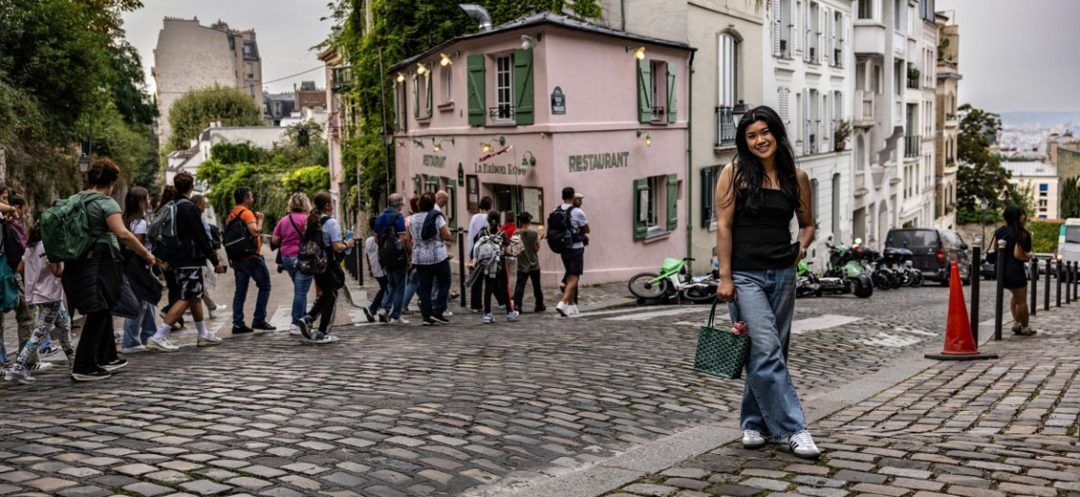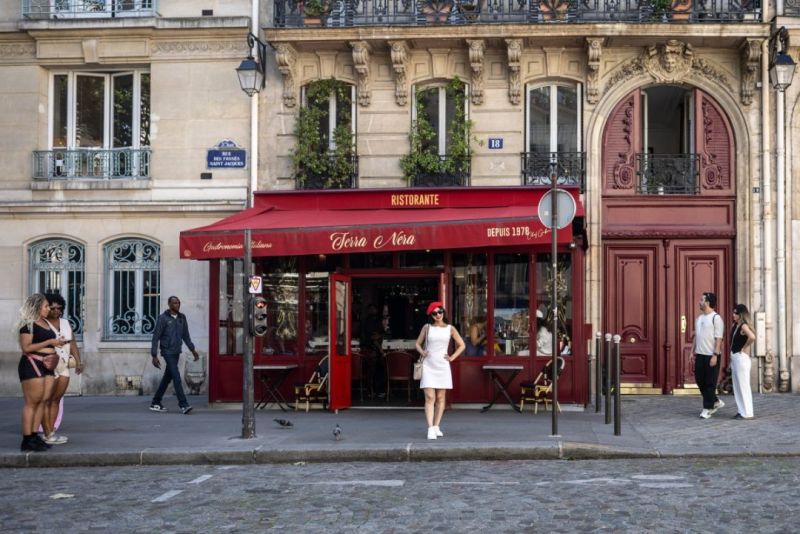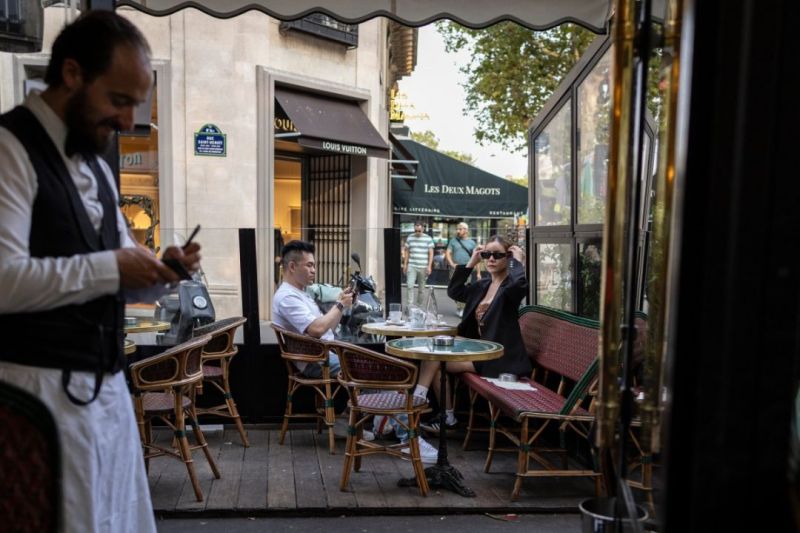
©A woman poses in front of "La Maison Rose" restaurant one of the many iconic Paris locations to feature in "Emily in Paris" - Photo by Olympia De Maismont/AFP
The Netflix series Emily in Paris pushes the boundaries of product placement, making it a central character in the storyline. Luxury brands, mainstream retailers and tech giants compete creatively to grab viewers’ attention, turning fiction into a massive catalog.
It’s hard to escape the flood of logos that bombard viewers of Emily in Paris. Lidl, AMI, Samsung, Jacquemus, Vestiaire Collective, LVMH, Google… The latest season of Netflix’s hit series takes product placement to star status, sometimes eclipsing the characters themselves. The heroine, Emily Cooper, isn’t left out. This young American expatriate in Paris, tasked with inventing innovative partnerships for big brands at her fictional luxury marketing agency “Savoir,” sometimes seems to be just a pretext for showcasing advertisers.
 A woman wearing a red beret poses next to the restaurant "Terra Nera" one of the many iconic Paris locations featured in "Emily in Paris."
A woman wearing a red beret poses next to the restaurant "Terra Nera" one of the many iconic Paris locations featured in "Emily in Paris."Photo credit: Olympia De Maismont/AFP
This dizzying self-reference shakes up the habits of the French audience, more accustomed to strict regulations surrounding advertising and product placement on television. “It’s new for us, but it’s common practice in American markets, where brands are integrated early on, from the scriptwriting stage, and commit to significant amounts,” explains Jean Dominique Bourgeois, director of the agency Place to Be Media, a specialist in the field. Expect to pay between 500,000 and one million euros for a few minutes of scripted appearance—a profitable investment for multi-country visibility.
The second-hand luxury fashion platform Vestiaire Collective understands this well. For an undisclosed amount, it secured a prime role when Mindy, Emily’s cash-strapped best friend, turns to the service—filmed in detail—to sell off her designer wardrobe. The goal: to boost its notoriety, especially in the US, where the French company already accounts for 20% of its sales. A winning strategy, as Vestiaire Collective saw a surge in new customers, both buyers and sellers, soon after.
 A woman poses for photographs in Cafe de Flore one of the many iconic Paris locations to feature in" Emily in Paris" - Photo credit: Olympia De Maismont/AFP
A woman poses for photographs in Cafe de Flore one of the many iconic Paris locations to feature in" Emily in Paris" - Photo credit: Olympia De Maismont/AFPEmily’s increasingly outlandish outfits, which have become a character in their own right, are also a hit. Yellow dresses, berets, striped jumpsuits, furry hats… Costume designer Marylin Fitoussi, who claims to “make your eyes bleed,” is regularly approached by brands seeking visibility or a younger clientele. Every look is dissected like at Fashion Week, and every logo spotted sparks an immediate buzz.
Netflix has grasped this enthusiasm. The platform partnered with Google for the first time, allowing viewers to purchase the clothes and accessories seen on-screen with just a click via Google Lens. This blurs the line between reality and fiction even further. “Watching the show gives the unsettling feeling of wandering through a giant shopping mall,” says Adam Sanchez, a fashion journalist at GQ. A sentiment shared by many observers who wonder: is the series nothing more than an extended commercial break?
Despite these criticisms, the audience, now knowing what to expect, wants more. The mix of a light-hearted plot sprinkled with glamorous, fast-paced consumption seems to hit the mark, propelling the show into the platform’s top 10. A model that could inspire others, at the risk of seeing our favorite shows turn into endless shopping magazines.
Behind her bubbly it-girl persona, could Emily Cooper actually be a savvy 2.0 walking billboard? One thing’s for sure, with its continuous parade of logos and a storyline that feels like a credit card transaction, Emily in Paris pushes the limits of product placement. The series, which is a giant showcase of luxury and lifestyle, reflects an era where the line between commercial fantasy and storytelling is fading. Where will the dance of brands and dollars take us next? Perhaps the answer lies in season 4.
With AFP
Read more



Comments